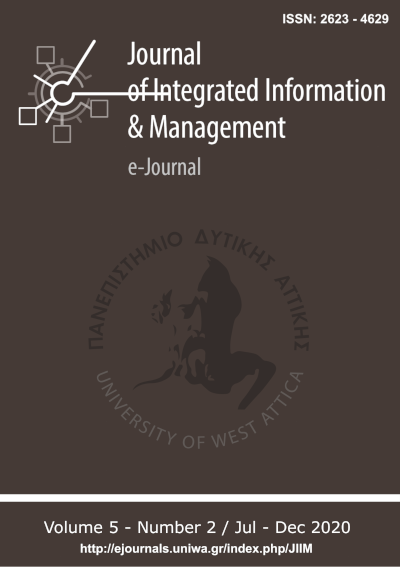Medical and health sciences’ community attitudes towards hybrid journals, academic networks, social media and research evaluation metrics a perspective from Greece

Abstract
Purpose: The present paper attempts to identify medical and health scientists' attitude towards the use of hybrid journals, social media and academic networks and the selection factors of publication medium, including alternative metrics.
Design/methodology/approach: A quantitative survey was conducted, based on a structured questionnaire. It focused on Health Sciences and Medicine, with a population sample mainly consisting of hospital healthcare professionals. Likert scale, simple multiple-choice and ranking type questions were used.
Analysis: 215 completed questionnaires were gathered and various statistics parameters were correlated with the demographic data (profession, experience, gender).
Findings: Most participants agreed that publishing in hybridjournals results in a significantly high cost for the authors which cannot be paid without funding support and probably affects the validity of the evaluation procedures. They also agreed that an open article published in a hybrid journal needs a shorter time for the peer review process, receives more citations and contributes essentially to the research process. Most of the participants use or would like to use ResearchGate and Google Scholar services. Social media involvement was considerably low in participants' responses. The number of publications and the prestige / credibility of the publishing media are considered to be the most important factors in research evaluation and in publishing media selection respectively.
Originality/value: No survey has been reported recently that focuses on health professionals' attitude towards Open Access movement in Greece. It is valuable to explore this community’s attitude because of their extremely active publishing profile, which decisively affects their career and largely contributes to research progress and national innovation.
Article Details
- How to Cite
-
Kouis, D., & Delikoura, E. (2024). Medical and health sciences’ community attitudes towards hybrid journals, academic networks, social media and research evaluation metrics: a perspective from Greece. Journal of Integrated Information Management, 5(2), 15–25. Retrieved from https://ejournals.epublishing.ekt.gr/index.php/jiim/article/view/37883
- Section
- Research Articles

This work is licensed under a Creative Commons Attribution-NonCommercial 4.0 International License.
Copyright Notice
Authors who publish with JIIM agree to the following terms:
- Authors retain copyright and grant the journal right of first publication with the work simultaneously licensed under a Creative Commons Attribution Non-Commercial License that allows others to share the work with:
- An acknowledgment of the work's authorship and initial publication in this journal.
- Authors are permitted and encouraged to post their work online (preferably in institutional repositories or on their website) prior to and during the submission process, as it can lead to productive exchanges, as well as earlier and greater citation of published work.





